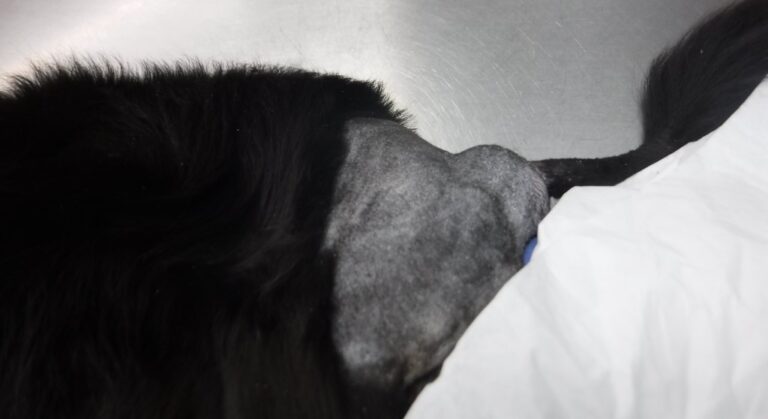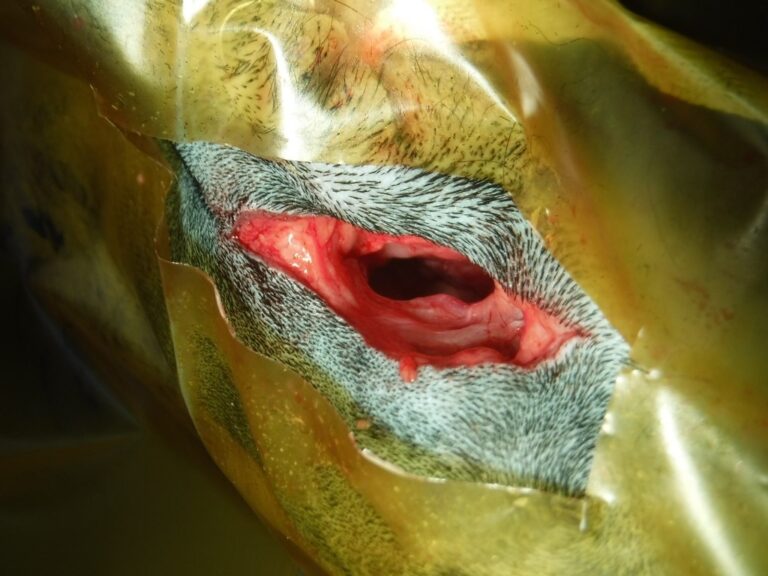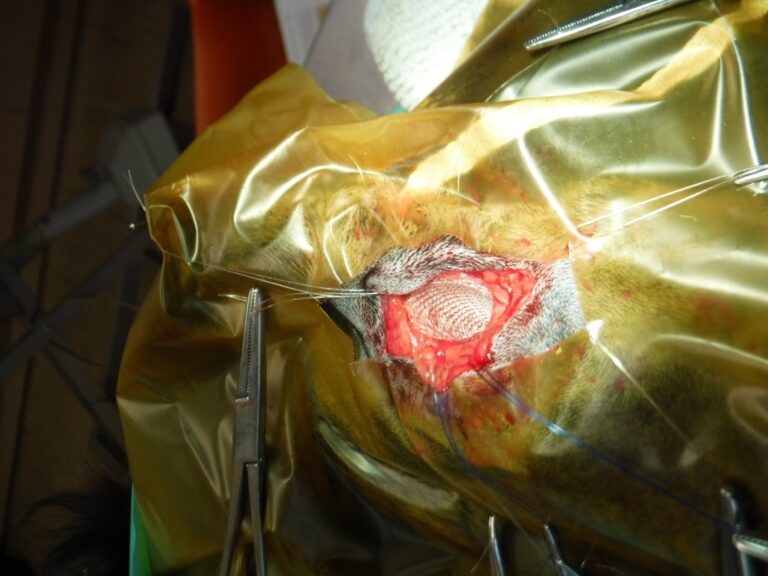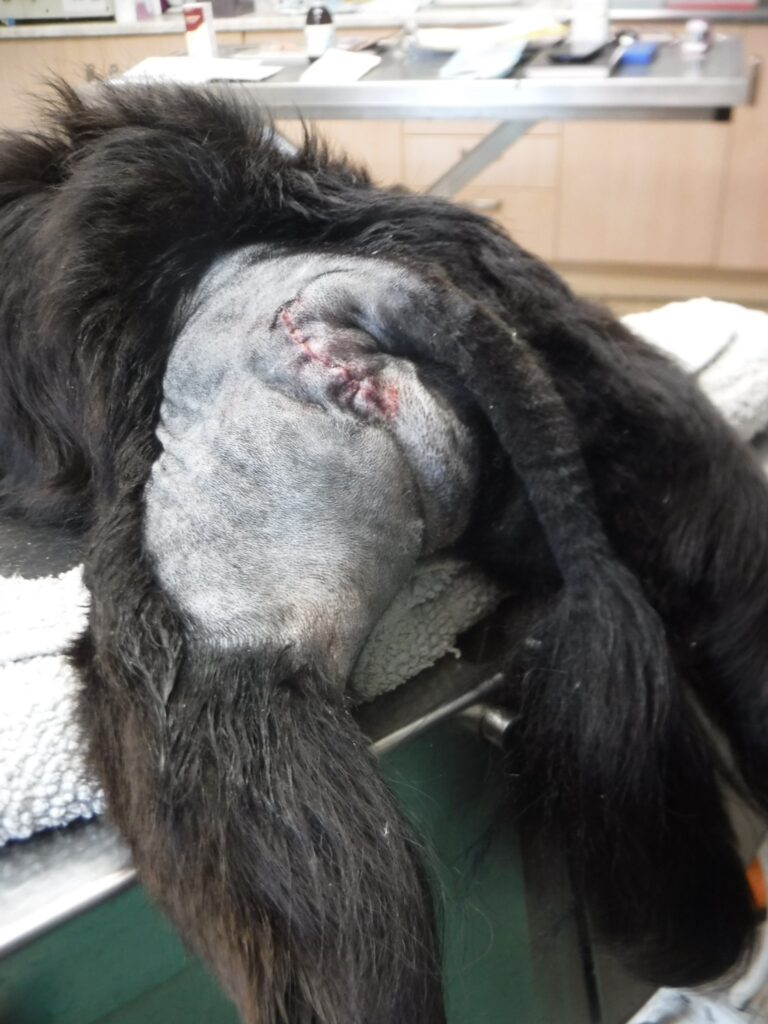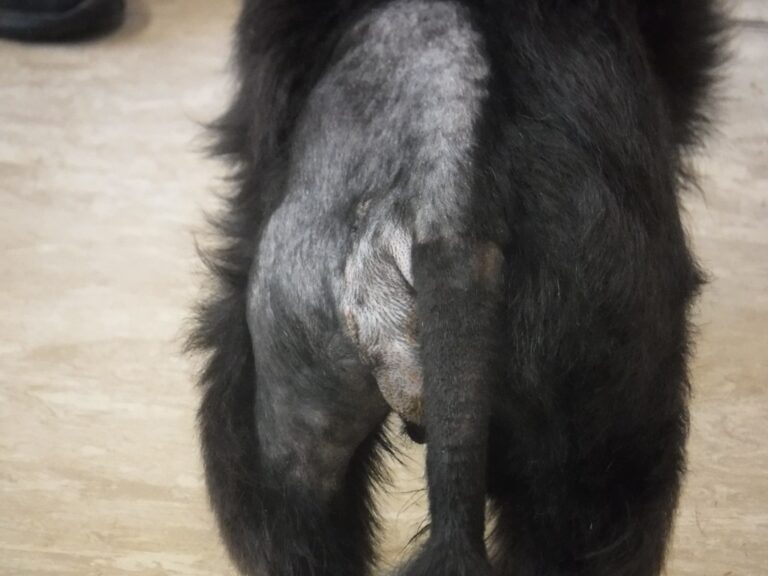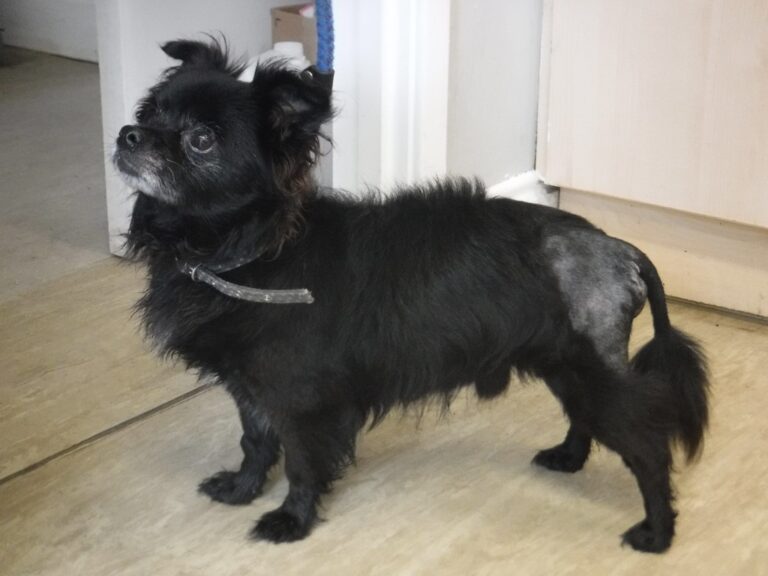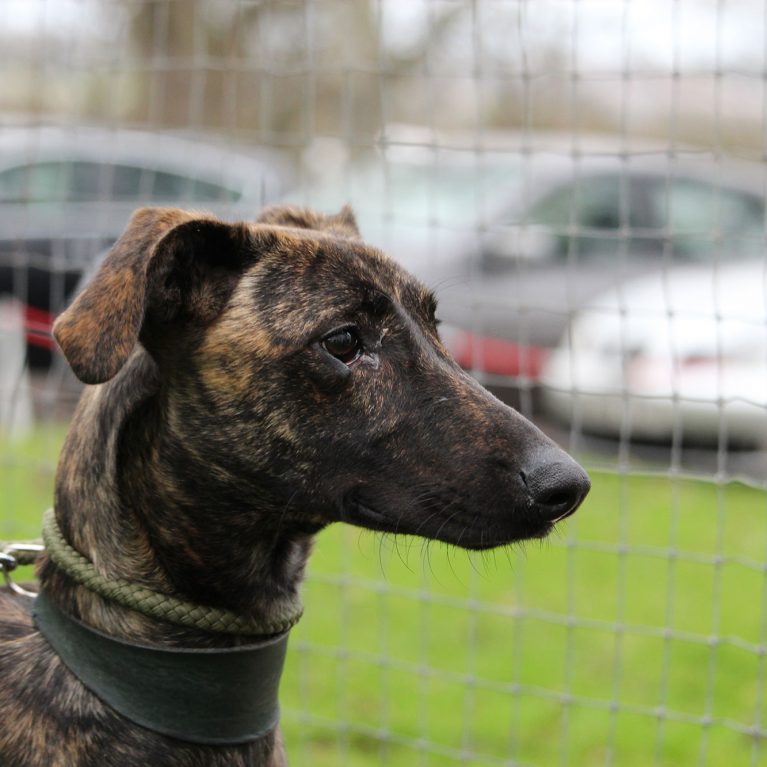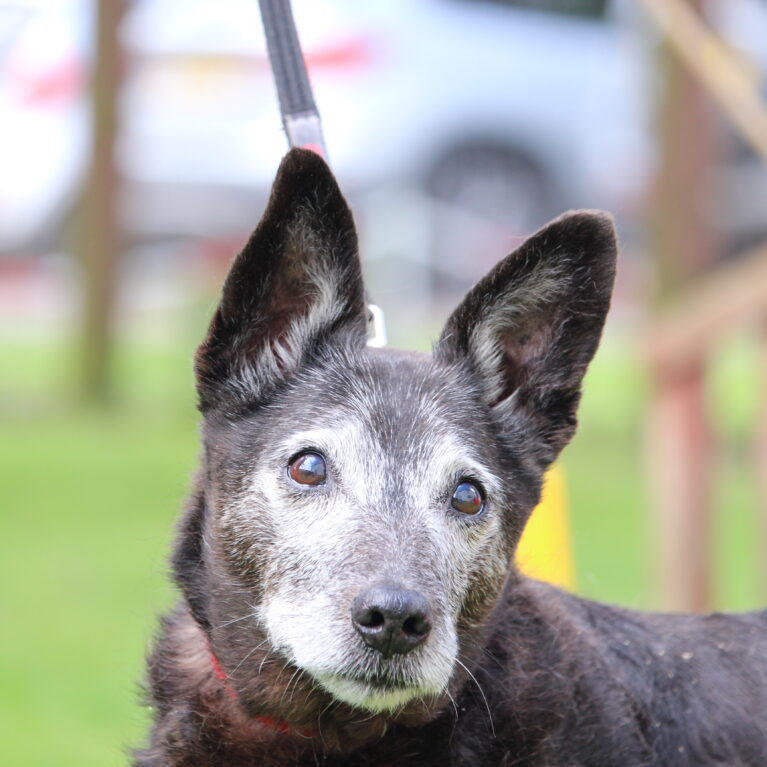Ozzy’s Hernia
Published: August 11th, 2020
Ozzy’s Hernia
Published: August 11th, 2020
Ozzy is a delightful little 10 year old Chihuahua who was found straying and brought to us here at Stray Aid. As well as needing to have a few loose teeth removed, we noticed Ozzy had a soft swelling just to the side of his tail-base – a perineal hernia.
This article contains detailed descriptions of Ozzy’s condition and operation, as well as graphic images of the operation itself in the gallery section at the bottom of this page.
A perineal hernia occurs when the muscles in that area of the pelvic floor become weakened. The hernia itself is a gap in the muscles, and the swelling is actually made up of organs and tissues which normally occupy the abdominal and/or pelvic cavities, protruding through the gap in the muscles.
Trapped organs can be very serious for a dog, sometimes causing sepsis, organ failure and possibly even death in a very short time. Luckily for Ozzy, only some fat was in his hernia, but he needed to have the hernia surgically repaired to prevent the more serious complications occurring in future.
JOIN TEAM SAFE TODAY, from just £5 per month, and HELP ENSURE WE CAN CONTINUE TO PROVIDE POTENTIALLY LIFE-SAVING VETERINARY CARE to animals like Ozzy
There are a number of possible causes for perineal hernias. They are most common in middle aged to elderly intact (uncastrated) male dogs. It is believed that uncastrated male dogs strain more when passing urine and faeces due to their often enlarged prostate gland, and the tissues around the rectum eventually stretch, weaken and then tear, resulting in a hernia. Some vets have also suggested that hormonal differences in intact male dogs make perineal hernias more likely to occur. They are far less common in castrated dogs.
Not only did Ozzy have his hernia repaired, he was also castrated to help prevent further issues arising in the future. This means he is much less likely to develop a hernia on the other side. It also reduces the likelihood of prostate disease and prevents testicular tumours.
The most common symptoms of a perineal hernia are swelling at the rear, constipation and straining to pass faeces. Other symptoms are painful defaecation, faecal incontinence, straining to pass urine, altered position of the tail. Ozzy’s only symptom was the swelling, but it is important that you keep a close eye on your own pet’s health and contact your vet if you notice any discomfort or changes in behaviour.
There is more than one surgical technique for perineal hernia repair. The most simple is to stitch together the muscles of the pelvic floor to close the space. Another is to create a flap of muscle from the pelvic floor and stitch this across the hernia. Surgical mesh is used in cases where there is not enough muscle to close the gap or when the hernia has recurred after the initial repair.
Ozzy is a tiny dog, weighing just over 4kg and the size of the hernia was approximately 3cm across. This is quiet large for such as small dog. There was very little muscle to feel as it had wasted away due to the hernia being present a long time. Due to these considerations, our Vet decided to use surgical mesh to repair Ozzy’s hernia. This was specially ordered for the procedure, at substantial financial cost to Stray Aid at a time when our income has seen a significant reduction due to COVID-19 restrictions.
Stray Aid is unique compared to many other rescue charities as we have our own on-site veterinarian facilities and team. This means we are able to ensure every animal in our care receives the treatment they need. However, this often comes at a significant financial cost, and we rely on the support of people like to you to continue to provide the medical treatment the animals in our care too often need.
JOIN TEAM SAFE TODAY, from just £5 per month, and HELP ENSURE WE CAN CONTINUE TO PROVIDE POTENTIALLY LIFE-SAVING VETERINARY CARE to animals like Ozzy
To start the operation, Ozzy was anaesthetised and the area clipped for surgery. This gave on on-site vet team a clear view of his hernia. The vet then cut over the hernia and pushed the fat back into his abdomen, where it belonged. You can see the whole in Ozzy’s muscle left by the hernia below.
Before the sterile surgical mesh was inserted, the hole in his muscle has prepared with total of 9 stitches. This was a very intricate and delicate part of Ozzy’s operation as the location of his hernia was so close to vital blood vessels and nerves. Thankfully, our skilled team was able to avoid any complications and the mesh, which was shaped into a cone to match the hole, was inserted and tied to the 9 stitches.
To finish his operation, the layers of tissue over his hernia were sutured back together, closing the hole in his muscle. Ozzy was then put into a recovery kennel and carefully woken from his anaesthetic.
Because of the close proximity of the surgical site to his anus, Ozzy was given antibiotics, as well as pain relief and a faecal softener in his food so he didn’t strain when going to the toilet. His recovery was really good, he immediately started eating and had no problems going to the toilet.
The Vet checked him regularly and, with plenty of love from our vet and kennel teams, he was given the all-clear 10 days after his operation, and shown himself to be a great patient.
We are delighted to say Ozzy has now gone to a lovely new home and we wish him all the best.
JOIN TEAM SAFE TODAY TO HELP US CARE FOR LOST, ABANDONED, AND UNWANTED DOGS LIKE OZZY
CAUCTION: Graphic images of Ozzy’s operation are displayed below. Please do not scroll further if you do not wish to see this content.
